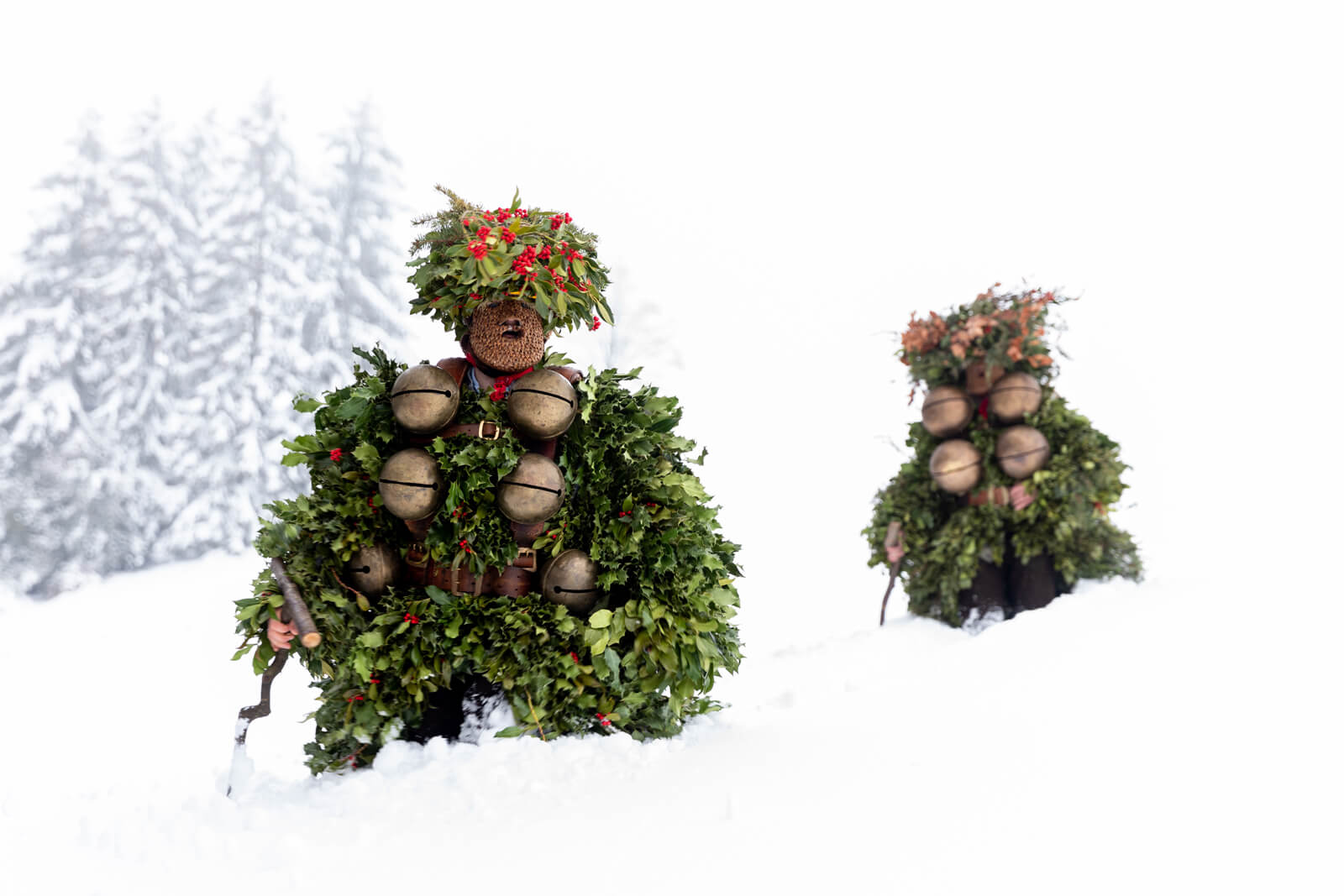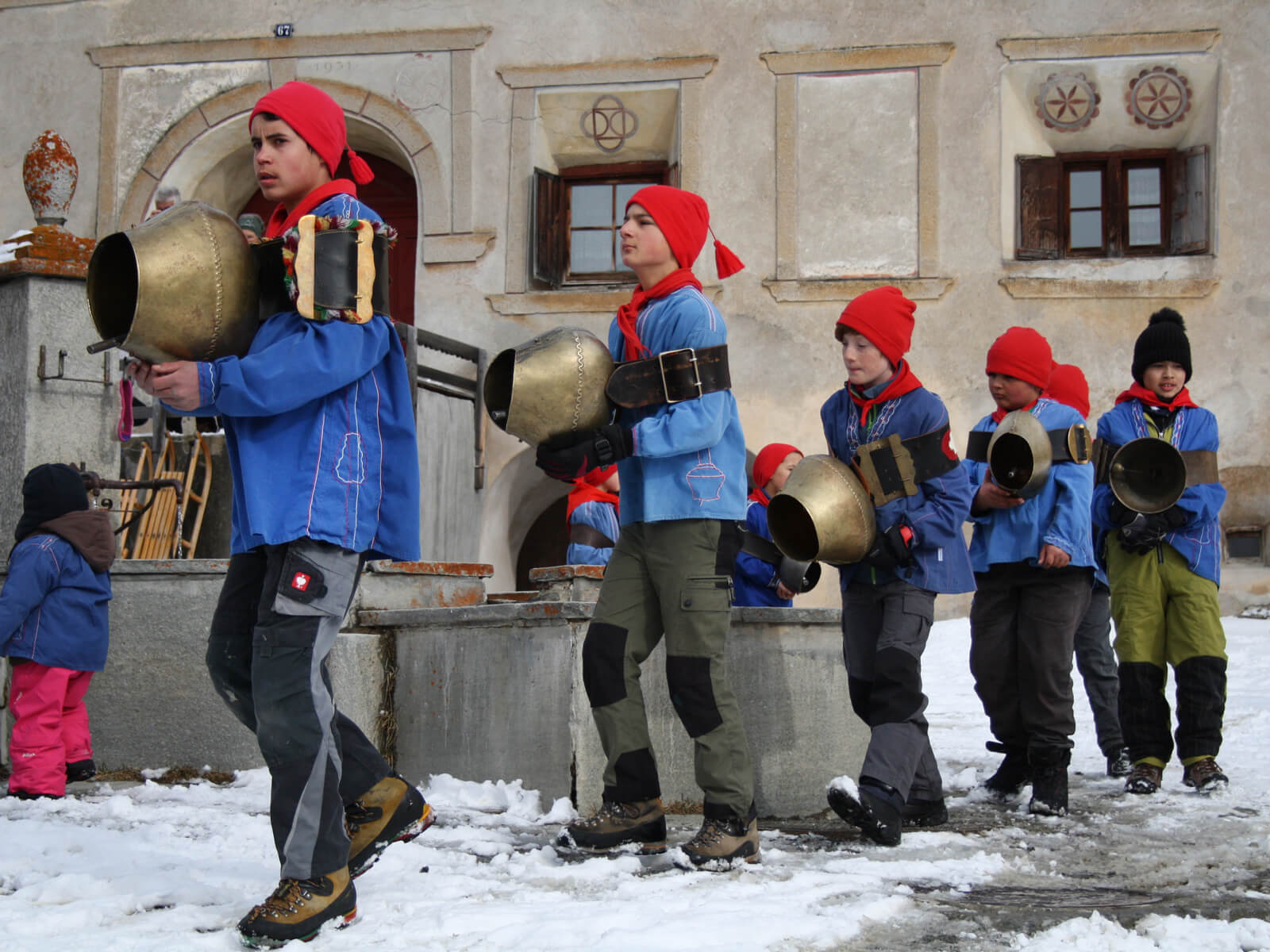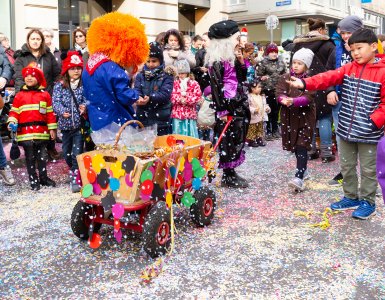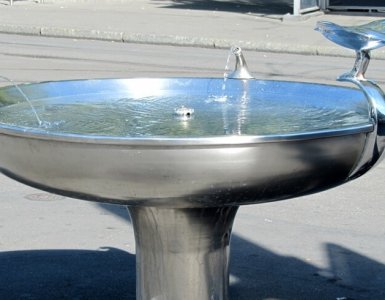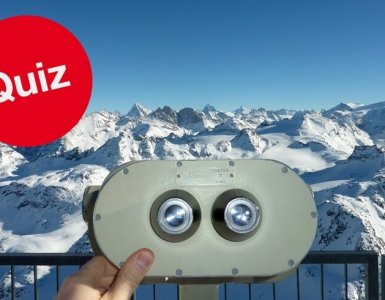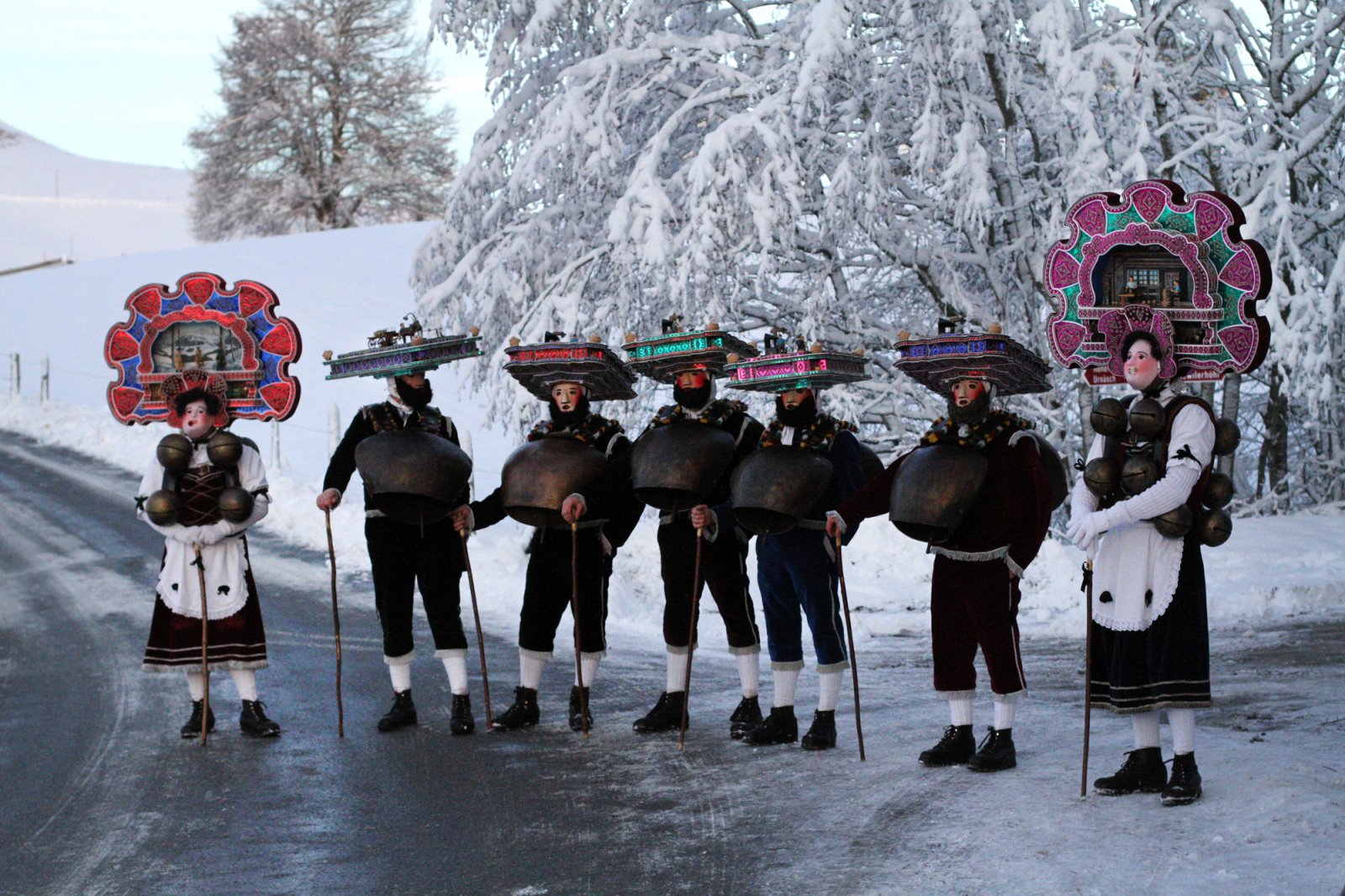
Many people have Coulrophobia, a fear of clowns, but few understand why.
I'm neither a fan of clowns nor anyone wearing a mask. However, I know why that is. It all goes back to an ancient Appenzeller tradition of Chläusen, which I experienced when I was just four years old.
I'm facing my fears at Silvesterchläusen.
On New Year's Eve and Old New Year (the New Year according to the old Julian calendar), people dress up and walk around a few of the villages in the small half-canton in North Eastern Switzerland.
They seemed to be monsters reminiscent of the creatures in "Where the Wild Things Are" that would approach my aunt's house, ringing their bells. I would start to cry and run for my life, hiding under a bed in her house and refusing to come out.
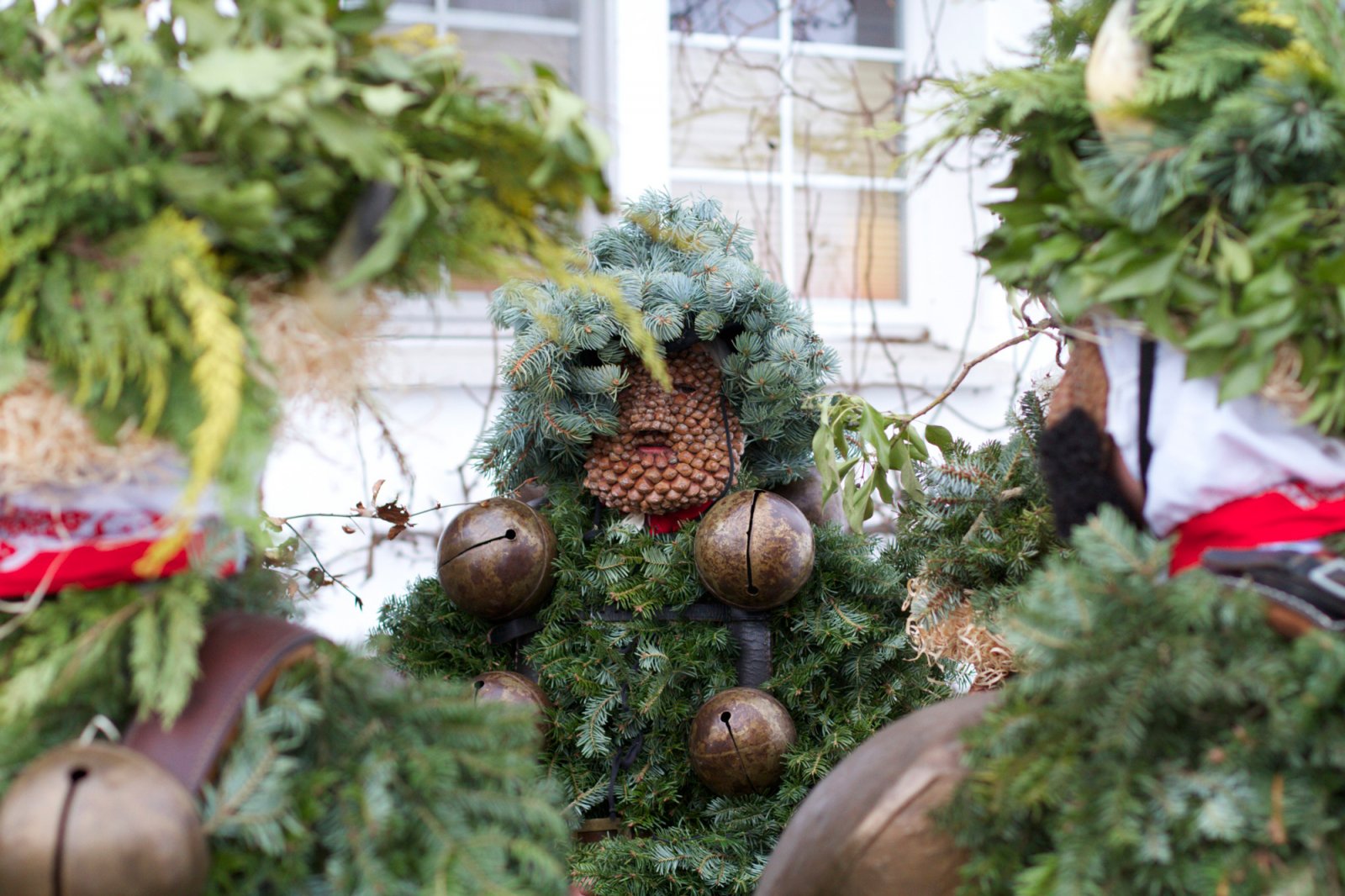
This was the start of my dislike of all things masked. However, I was determined to face my fears this year, so I returned to my aunt's house for Alten Silvester. I was joined by my friend Matt Anderson and his wife, who grew up in the Rheintal just 20 kilometers away - but had never seen this tradition.
Appenzell-Ausserrhoden is a mystic canton
Even for the Swiss, there is something mystic about Appenzell-Ausserrhoden. Its rolling hills, misty mornings, and small family farms are reminiscent of the Shire in J.R.R. Tolkien's The Hobbit. The Appenzeller's dialect, music, and customs have left many ethnographers baffled as to where exactly these people came from.
To the locals, there is no question that they have always been there…
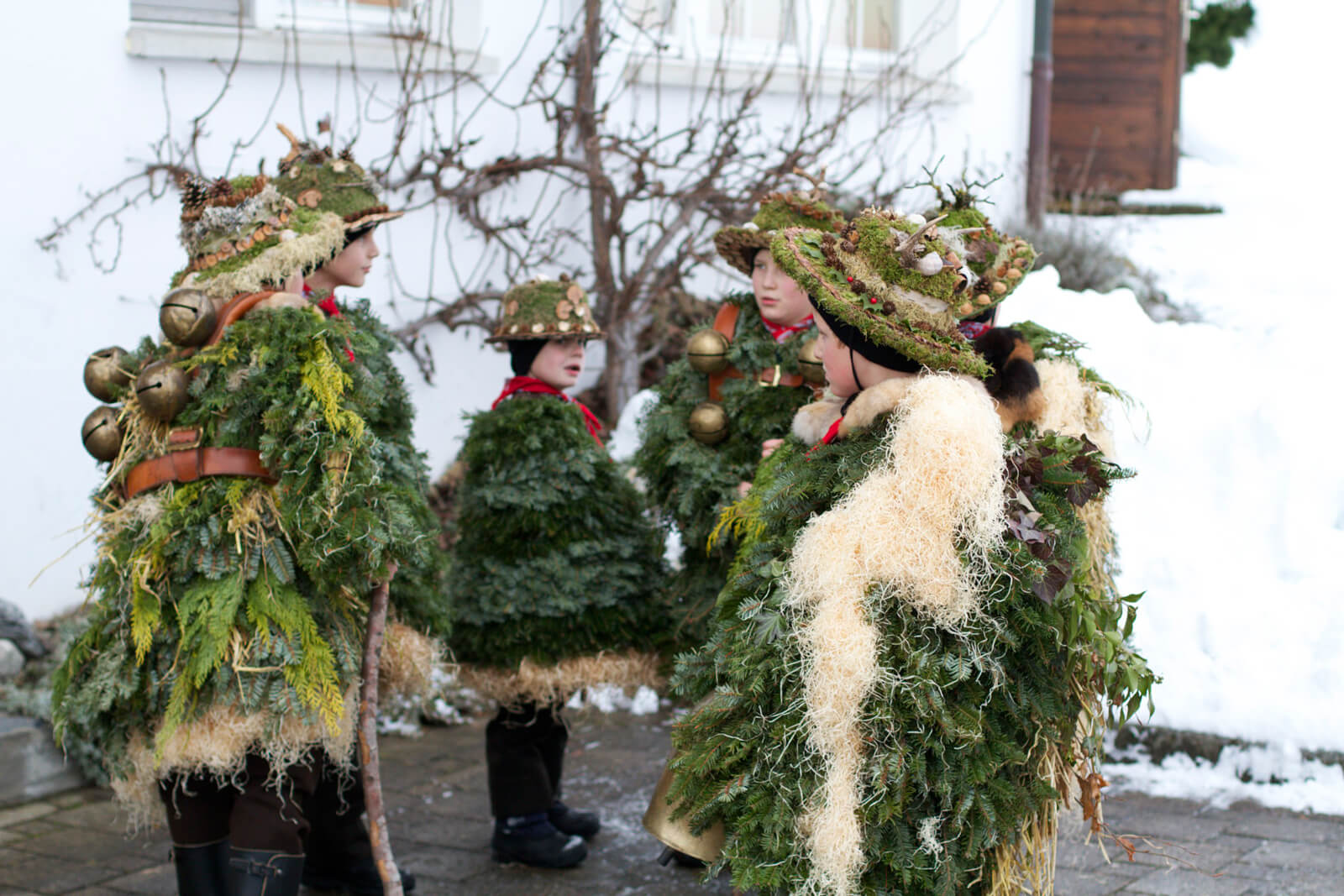
Much the same goes for the Chläusen tradition of Old Silvester (Old New Year's Eve). When it started (and why) are questions with no clear answer.
Does it come from Pagan traditions to scare away the evil spirits of the bygone year in hopes of a more fruitful one? Or is it a combination of Niklaus and Fasnacht traditions? It remains a topic of investigation. What is sure is that the clergy, up until recently, denounced the practice as being un-Christian.
Chläuse terminology: essential words to know about Silvesterchläusen
A group of Chläuse is known as a Schuppel.
The Chläuse, with the giant bell, leads the Schuppel. The one with the smallest bell will ring his last when the celebration ends late on the night of the 13th of January.
A female Chläuse is called a Rollewiib, or Rolli for short. Here's one pictured:
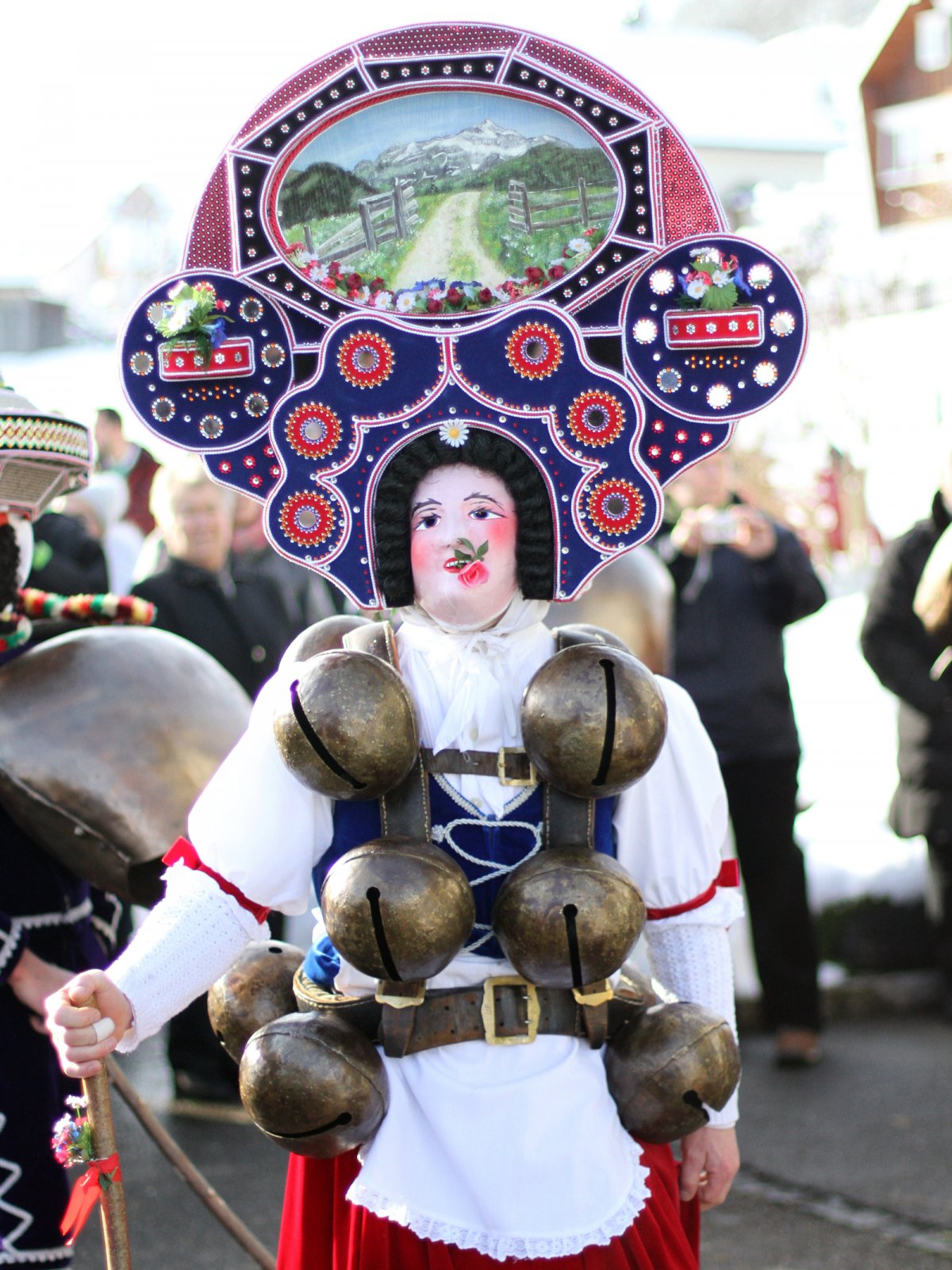
There are three kinds of Chläuse:
- die Wüeschten (the ugly)
- die Schönen (the beautiful)
- die Schön-Wüeschten (the beautiful-ugly)
1. The costumes of the Wüeschten
The Wüeschten are covered in pine branches, cedar branches, or straw and wear large cowbells. Their masks are ugly, typically characterized by googly eyes, ferocious-looking teeth, and sometimes horns. Though they look evil, they are not meant to be regarded as such:
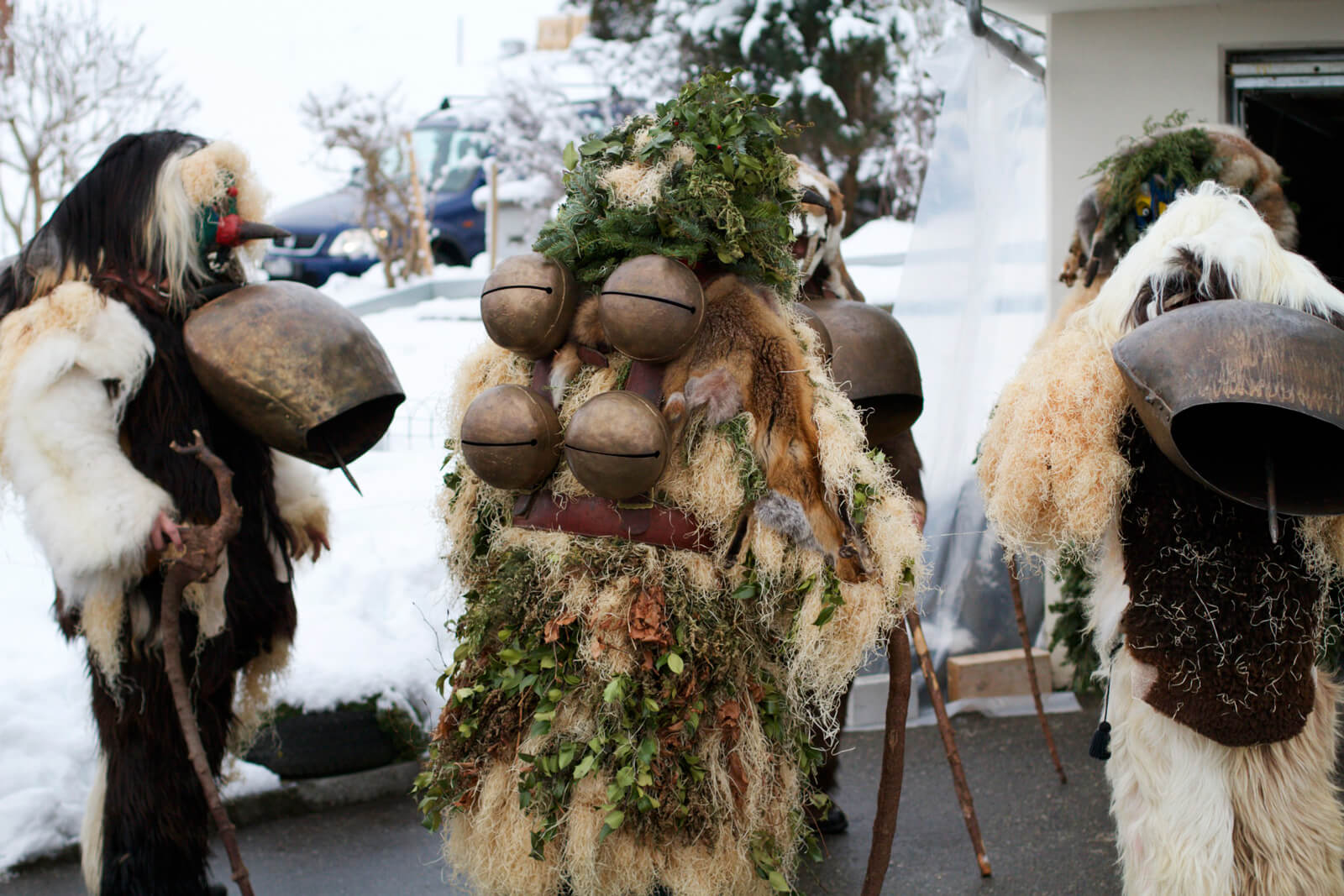
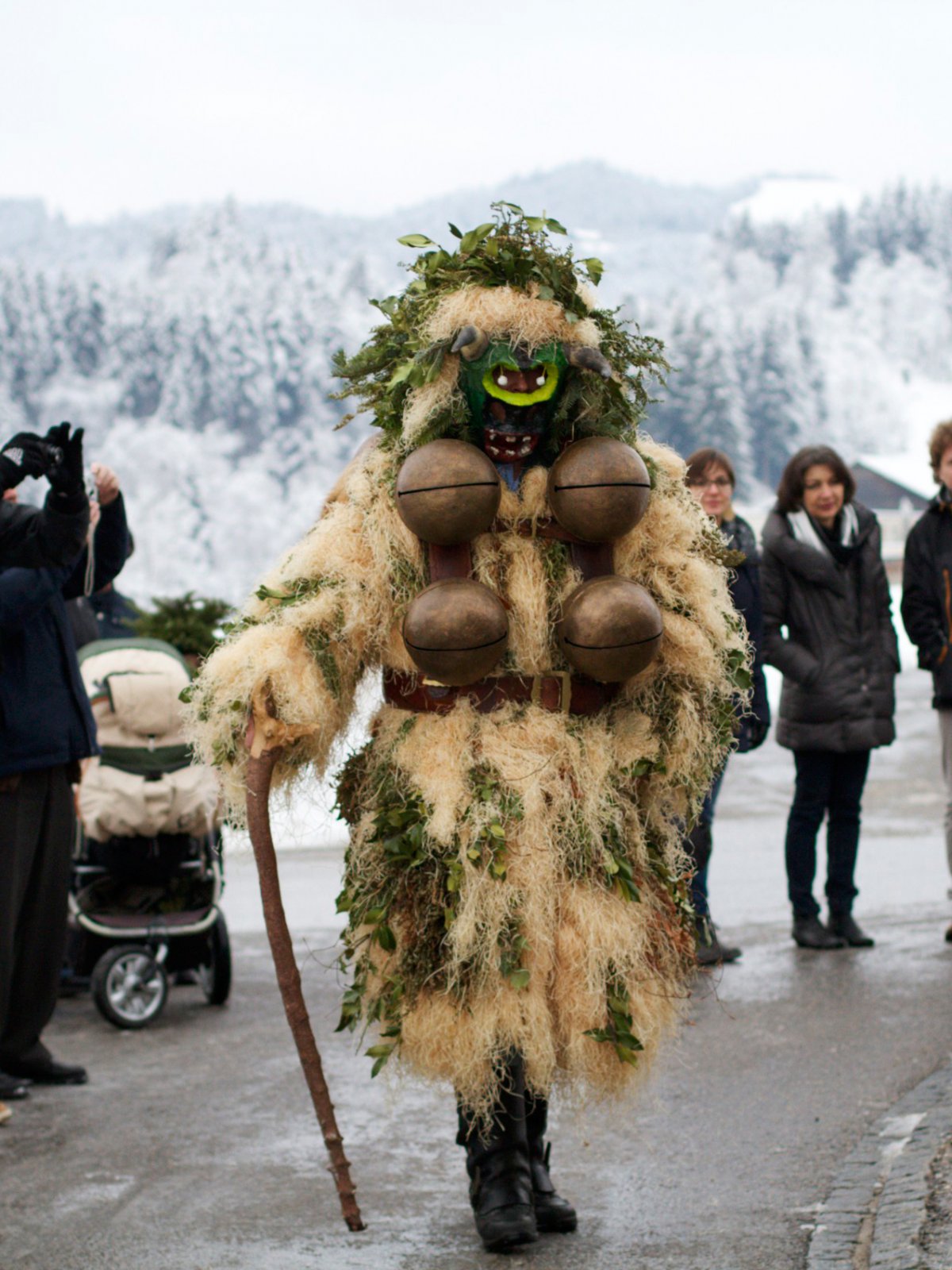
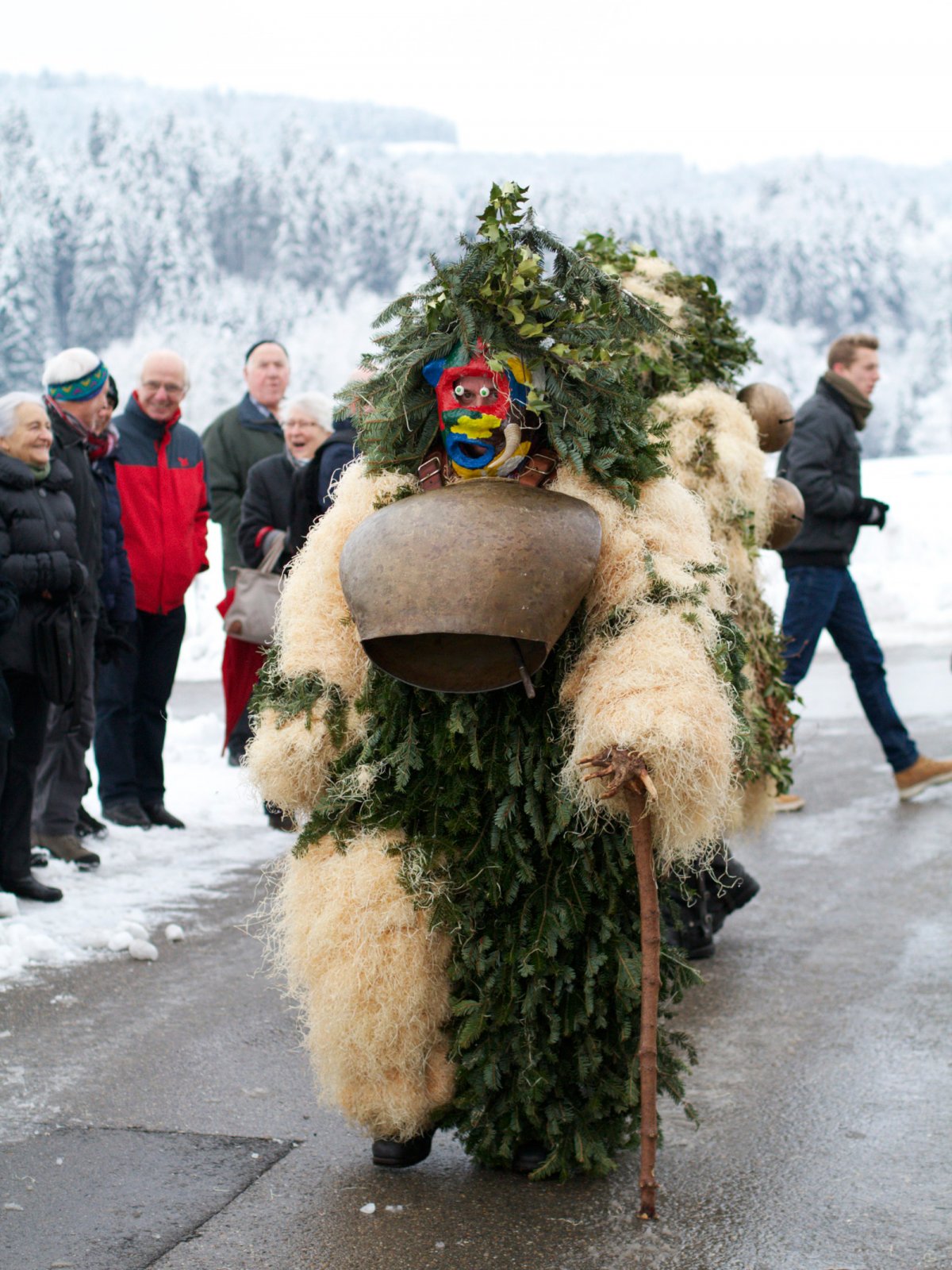
2. The costumes of the Schönen
The Schönen wear brightly-colored traditional dress (Tracht) and have masks that look like the faces in traditional Appenzeller paintings.
They also wear giant headpieces that tell a story or show scenes from everyday life in the alpine meadows. These headpieces can weigh up to 8 kilograms and are handmade annually.
The headpiece of the "women" Chläusen can easily have a height of over 50 cm. They also wear giant headpieces that tell a story or show scenes from everyday life in the alps. These headpieces can weigh up to 8 kilograms and are handmade every year.
Because the masks of the Schönen are so intricate and delicate, you won't catch them when it is snowing or raining. It takes about three years to make a new headpiece, which is the interval at which they are replaced. Many people they visit make small donations to help them buy new materials for their costumes and headpieces.
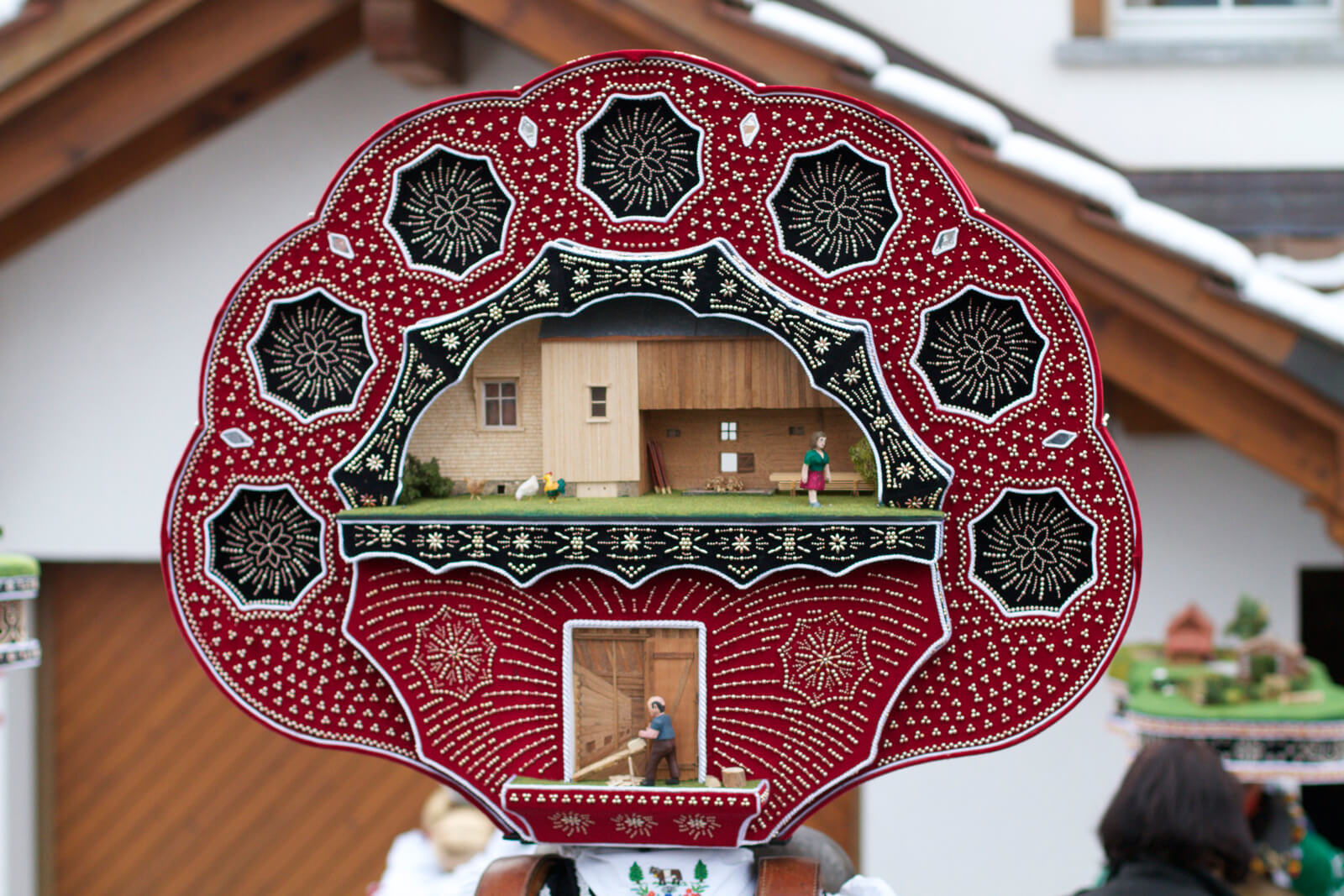
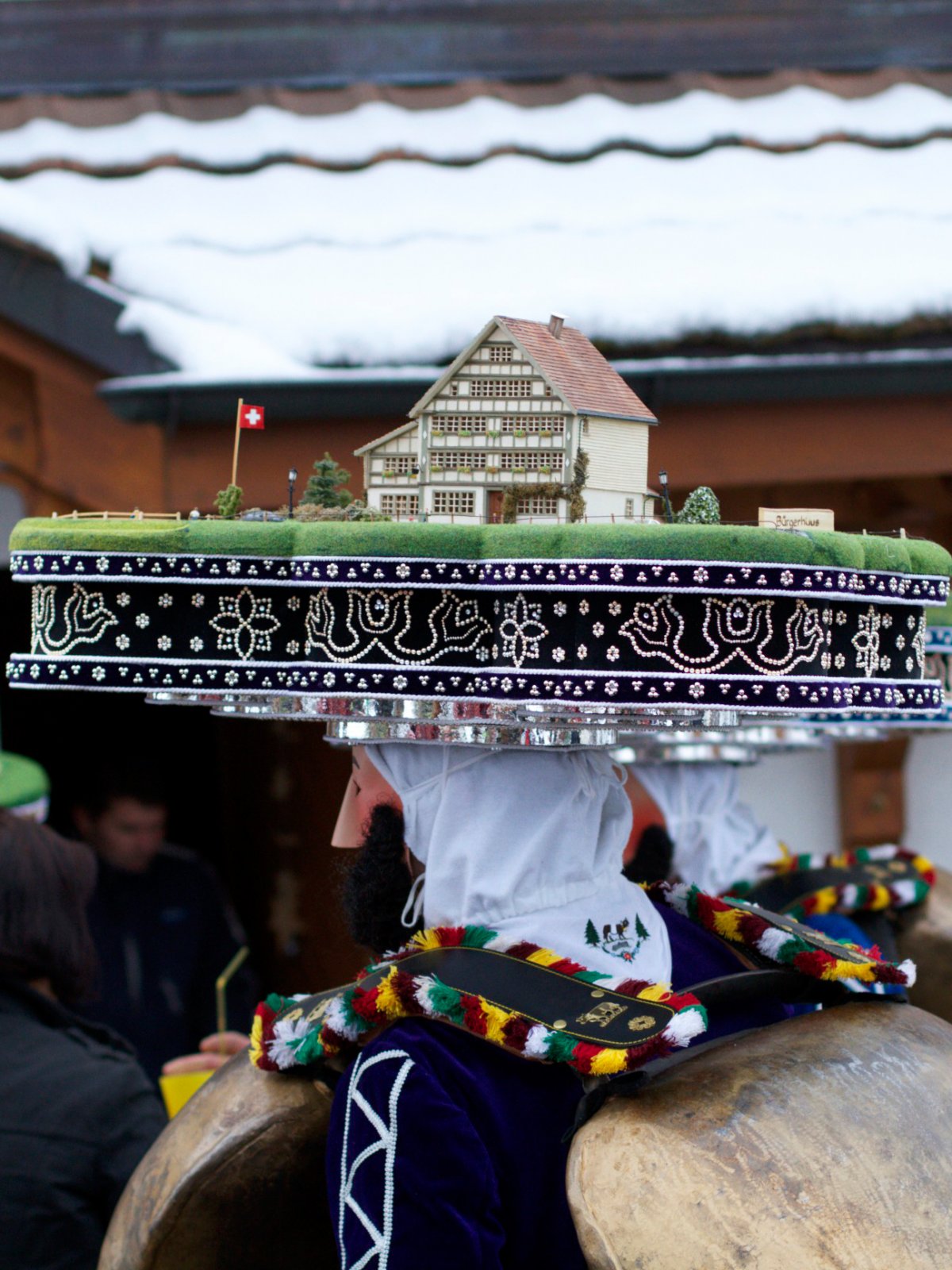
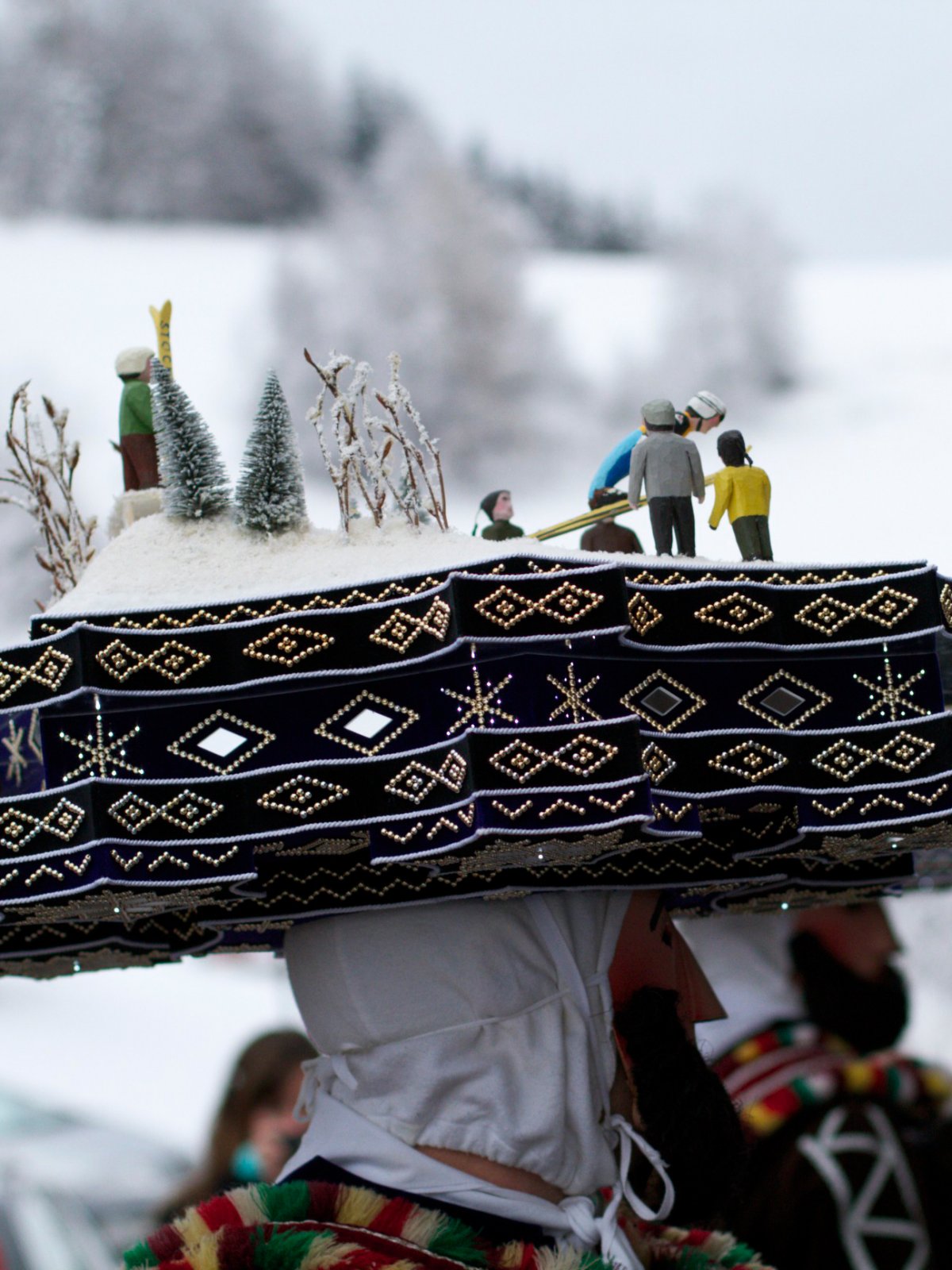
3. About the Schön-Wüeschten
The Schön-Wüeschten are a mixture of the ugly and the beautiful. Their dress is made of forest elements like that of the ugly ones. But their masks are more human in appearance, and they also have headpieces made of leaves, nuts, and straw depicting alpine scenes such as barns.
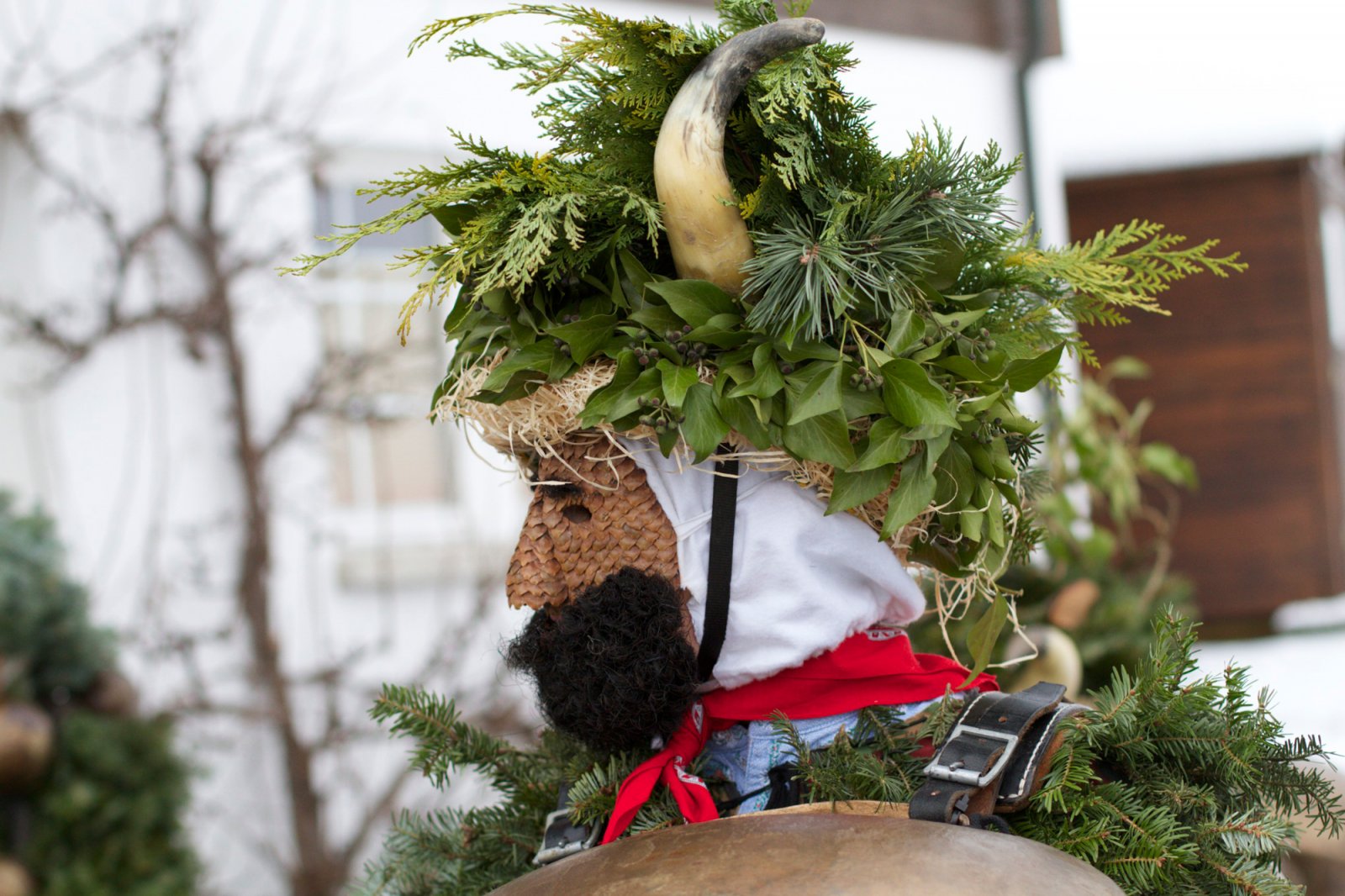
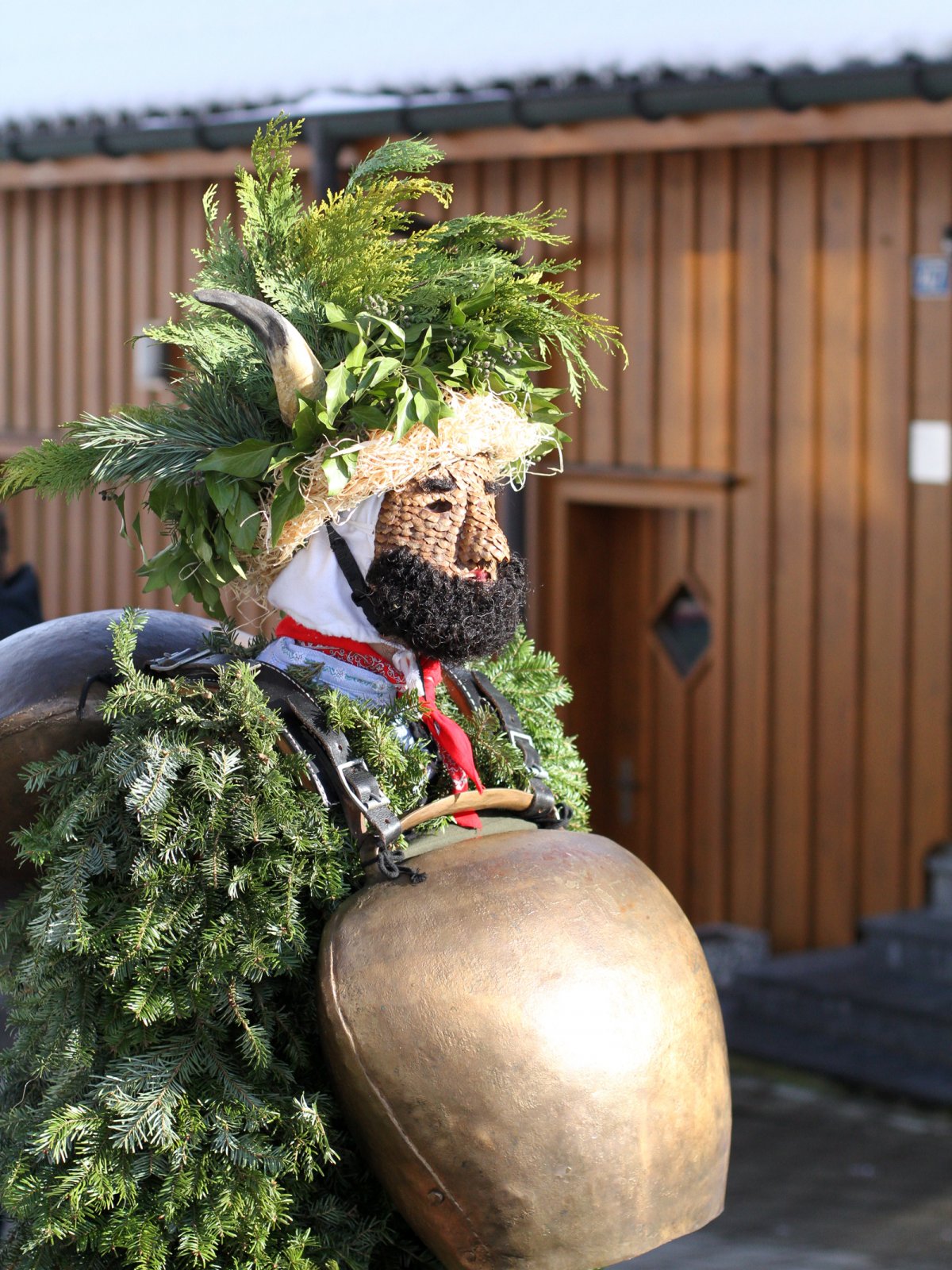
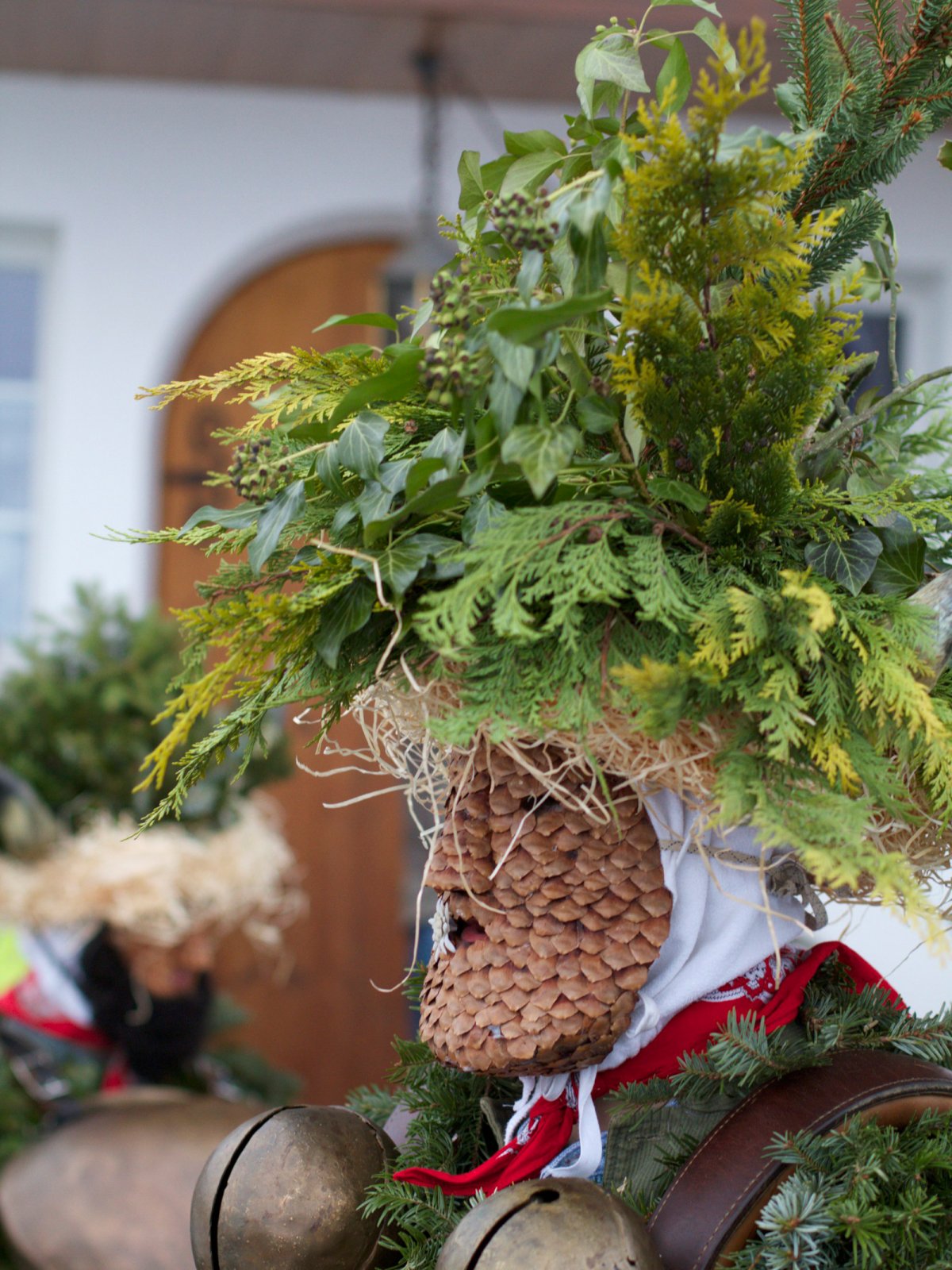
Chläusen is a family affair.
First off, the Chläuse are always men. Even the Rollis, the ones that look like women - traditionally two per Schuppel are men. If you go to Urnäsch or Waldstatt, the two towns where this tradition is most actively practiced, you will see adult, teenage, and even children Chläuse.
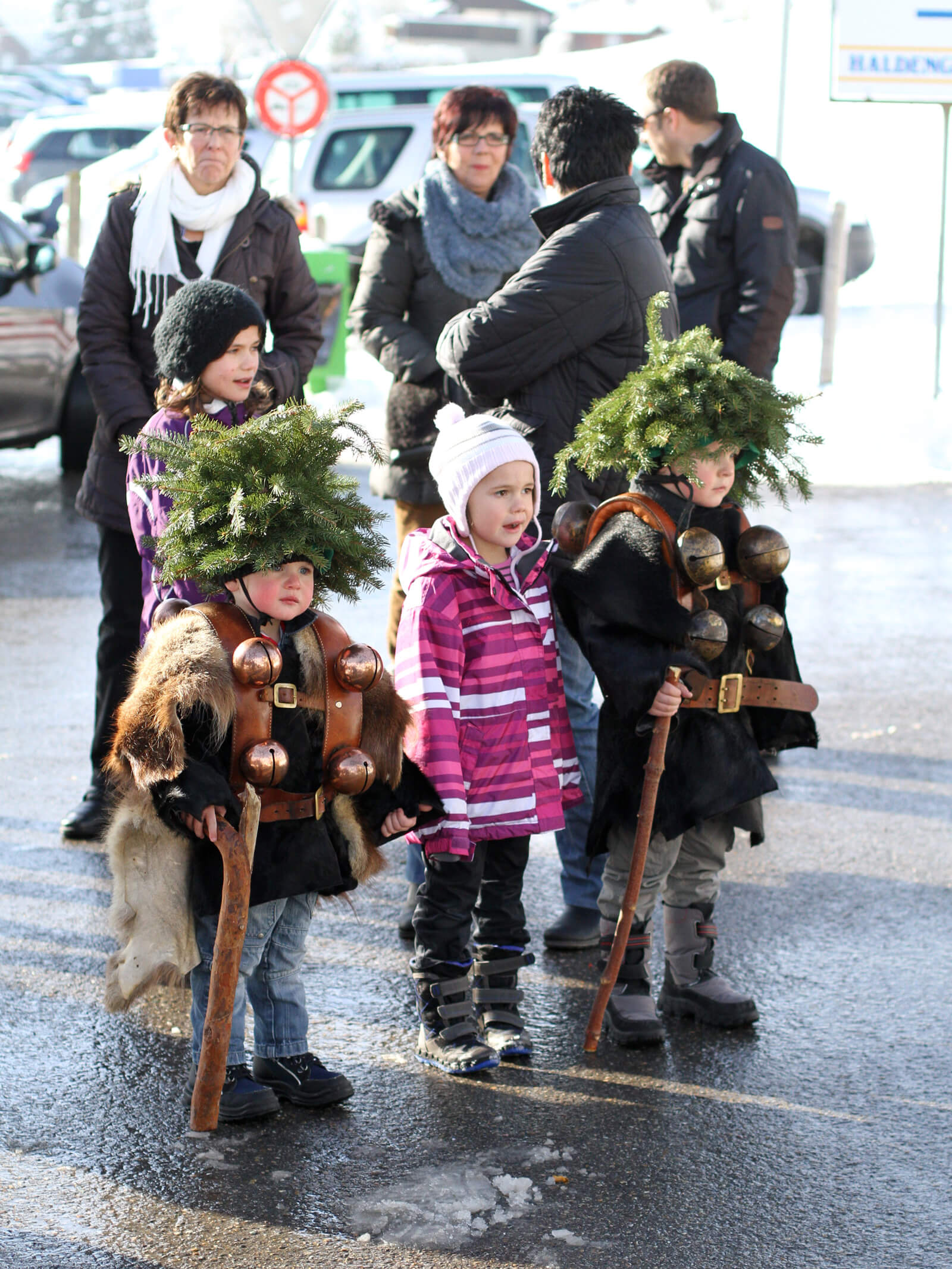
In general, a costume can weigh anywhere from 20 to 30 kg. The Chläuse wear large cowbells of different sizes and sing Zäuerli (songs without a text) in front of the homes they visit.
Seeing and hearing the Chläuse gave me a newfound appreciation of this tradition. I gained awe for the intricacy and beauty of the headpieces and costumes.
It was also lovely to see how people (such as my aunt) open their doors to the Chläuse, neighbors, and tourists alike. They even serve lunch, warm drinks, and snacks. Alter Silvester is a communal affair.
I highly recommend experiencing Alter Silvester to anyone who wants to witness a truly unique and memorable event!
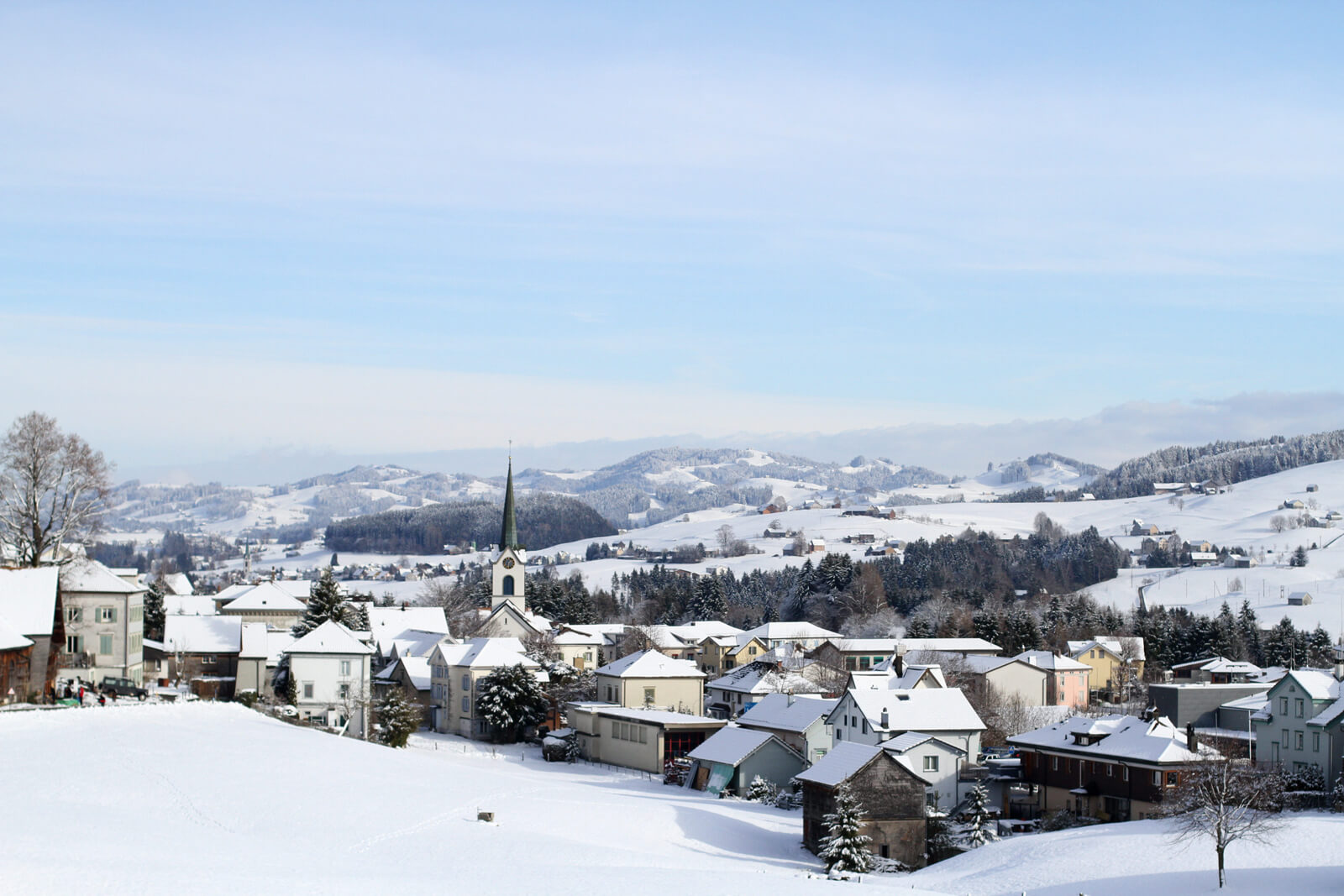
(Photographs copyright by Christian Langenegger)

